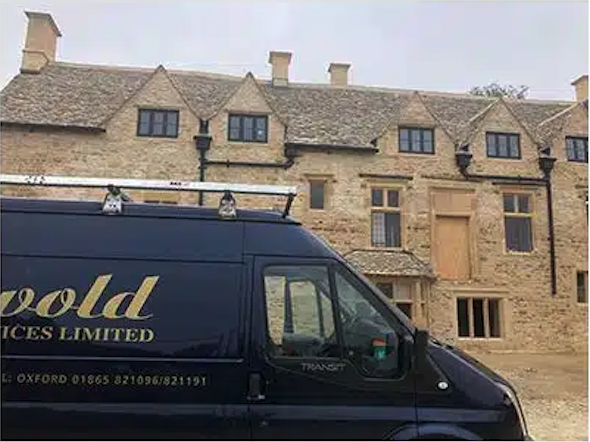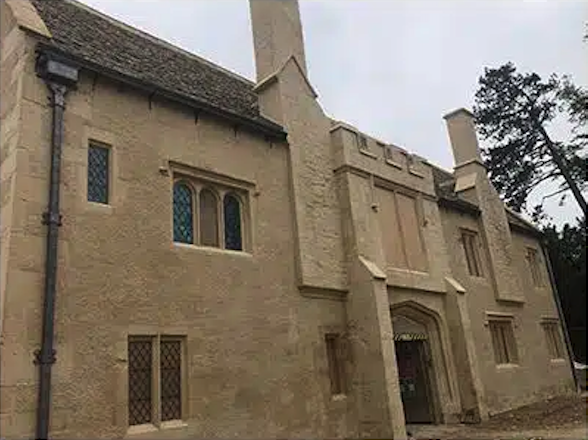Cast Iron On A Medieval Building
Project Overview
- Location: Medieval manor house near Stow on the Wold, Cotswolds
- Client: Grade 1 listed medieval manor house mentioned in the Domesday Book
- Project Start: May 2018
- Part of: A 10-year refurbishment project
Historical Context
The present house evolved from a modest courtyard dwelling, with the oldest parts dating back to 1230, gradually becoming grander with the addition of great halls, new wings, and ranges.
Project Brief
The client requested the installation of traditional cast iron rainwater goods to match the building’s historical integrity. This required bespoke drive-in gutter brackets, which needed to be driven into both the stonework and wooden beams.
Challenges
One of the primary challenges we faced was the hardness of the stone walls. The installation of the bespoke drive-in gutter brackets required extensive drilling, and the stone’s durability meant we went through numerous drill bits just to create the pilot holes. The process was slow and labour-intensive, highlighting the old adage, “They don’t build them like they used to.” Despite these difficulties, our team persevered, and the brackets were eventually secured, allowing us to install the gutters.
Another significant challenge was ensuring that all installations were in keeping with the building’s historical architecture. This project tested all our years of experience working on Grade 1 and 2 listed buildings, making it one of the most challenging and prestigious projects we have ever undertaken.
Components Installed
On this project, we fitted three different sizes of gutter, downpipes and bespoke rainwater hoppers all supplied by JJW Longbottom.
- Bespoke Drive-in Brackets
- Cast Iron Hoppers
- Beaded Cast Iron Gutters
- Cast Iron Box Gutters
- Three Different Sizes of Gutter and Downpipes
Outcome
This was one of the most challenging and prestigious projects undertaken by the Cotswold Rainwater team, testing their extensive experience with Grade 1 and 2 listed buildings. The project was completed successfully, preserving the building’s historical features.









